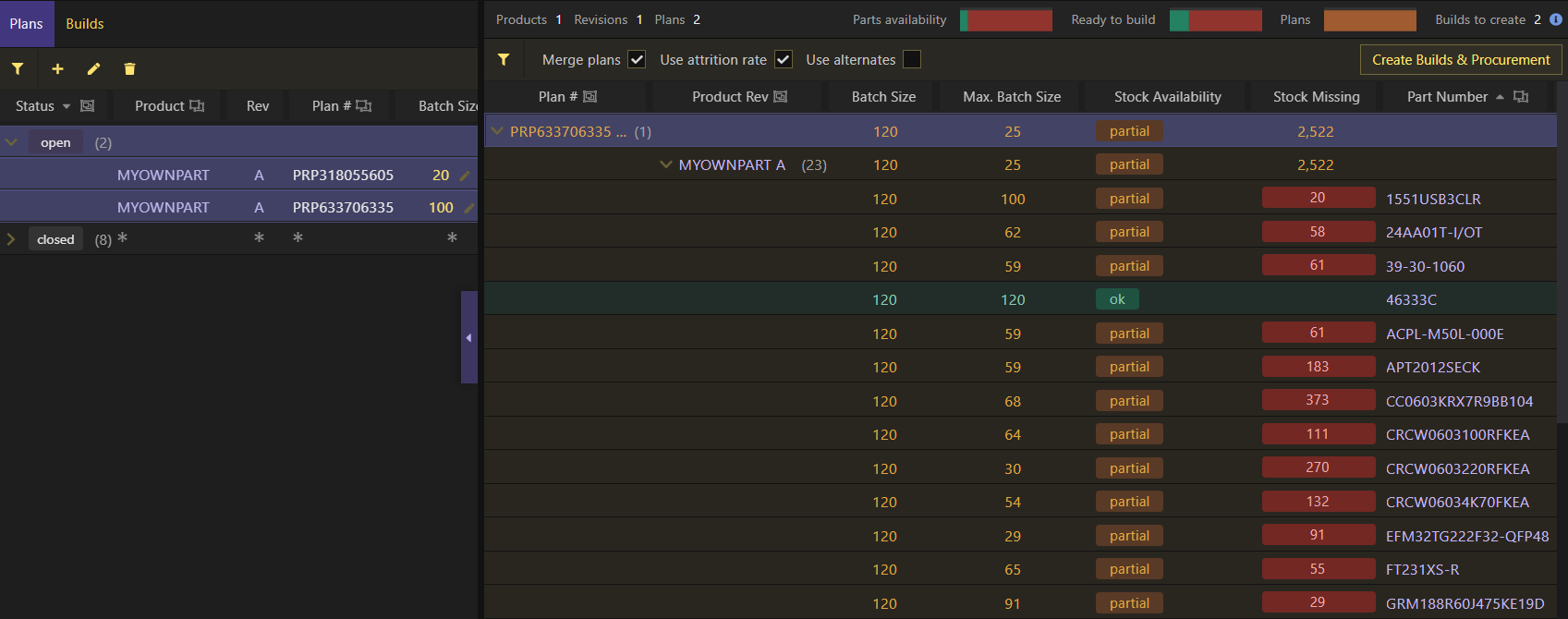Once a Workspace has been opened with this version of the app, you won't be able to use it in earlier versions. This is because v2.10 introduces concepts and data types that previous versions don't know how to deal with. Always make sure to backup your data before updating the app.
- Newly redesigned and rewritten documentation website
- Units of measure: you can now track things that are measured by its length, area, volume or weight (learn more)
- Parts can now have one of these categories:
Electrical,MechanicalorConsumable(learn more) - Role-based permissions on Team Workspaces (learn more)
Projectshave been renamed toProducts- Improved production planning and parts procurement (more on this below)
- Lowest state of a product build is now
allocated(previouslyplanned) as there's now production plans - Inventory can have its own unique ID code (e.g. code that uniquely identifies a reel)
- Barcode labels now include a second barcode which encodes its title (e.g. part number, storage location's name, etc)
- When manually adding rows in a BOM, a part can be immediately picked to be assigned
- Custom fields of type
optioncan have a background color, depending on its value, for easier visual identification - When moving parts from a purchase list into purchase orders, purchase orders that are still open for the selected can be picked instead of creating new ones
- Parts can be directly
Add to...purchase orders (useful when you don't need to find quotes for certain parts, which in case of purchase lists you are required to) - Only for sale parts can be added into sales orders and sales-only suppliers (i.e. parts must be marked as
for salebefore they can be added into sales orders or sales-only suppliers) - Several UI and UX minor improvements
[fix]When picking inventory for generic parts in production, respect theDefault sorting(by default, parts with the lowest stock should show up first)[fix]Unable to export the History table into CSV or JSON formats
Better Production Planning and Parts Procurement
In previous versions, missing inventory was checked against currently available stock and on a per-project basis. Inventory would only become unavailable only when reserved, or actually used, on a given project build. This made it difficult to tell if you'd have enough stock to build multiple projects at a single time which eventually use parts in common.
Better than checking currently available stock is to check your stock balance. This way, even if you don't have any stock available but already have it planned (e.g. on a purchase list) and don't have anything that is meant to use it (i.e. not allocated to any production build or sales order), then you probably don't need to buy or produce more of it in case that incoming stock (i.e. planned, on-order on in-production) is already enough. In other words, if you are overstocking and that extra quantity is enough to fulfill your needs, then you don't need to procure more of it.
Another improvement is being able to schedule production through production plans. A production plan describes a need to build a product in a given quantity by a given date. This way you can plan production for the whole year if needed. Production plans create planned inventory. At any given time you can then select the production plans you actually want to allocate into production and for which you'd want to check for missing inventory so you can procure it.

The app will tell you which plans can be built, if partially, in full or not at all (i.e. not enough parts to build a single unit). You can also see which exact parts are missing and in which quantities.
A single production build can be created from several production plans for the same product and revision. If it's possible to build a fraction of the desired quantity without having to procure parts, the app will create two builds: one that can be built as soon as possible, and another one that will have to wait for parts now being procured.
Procurement itself is also done automatically: the app will tell you which missing parts will be added into purchase lists or, in case of sub-assemblies, for which parts production plans will be created. On the other hand, you can also see on the production builds which parts have been automatically procured.
You can read more about this in the documentation website. If you still have questions, please get in touch!